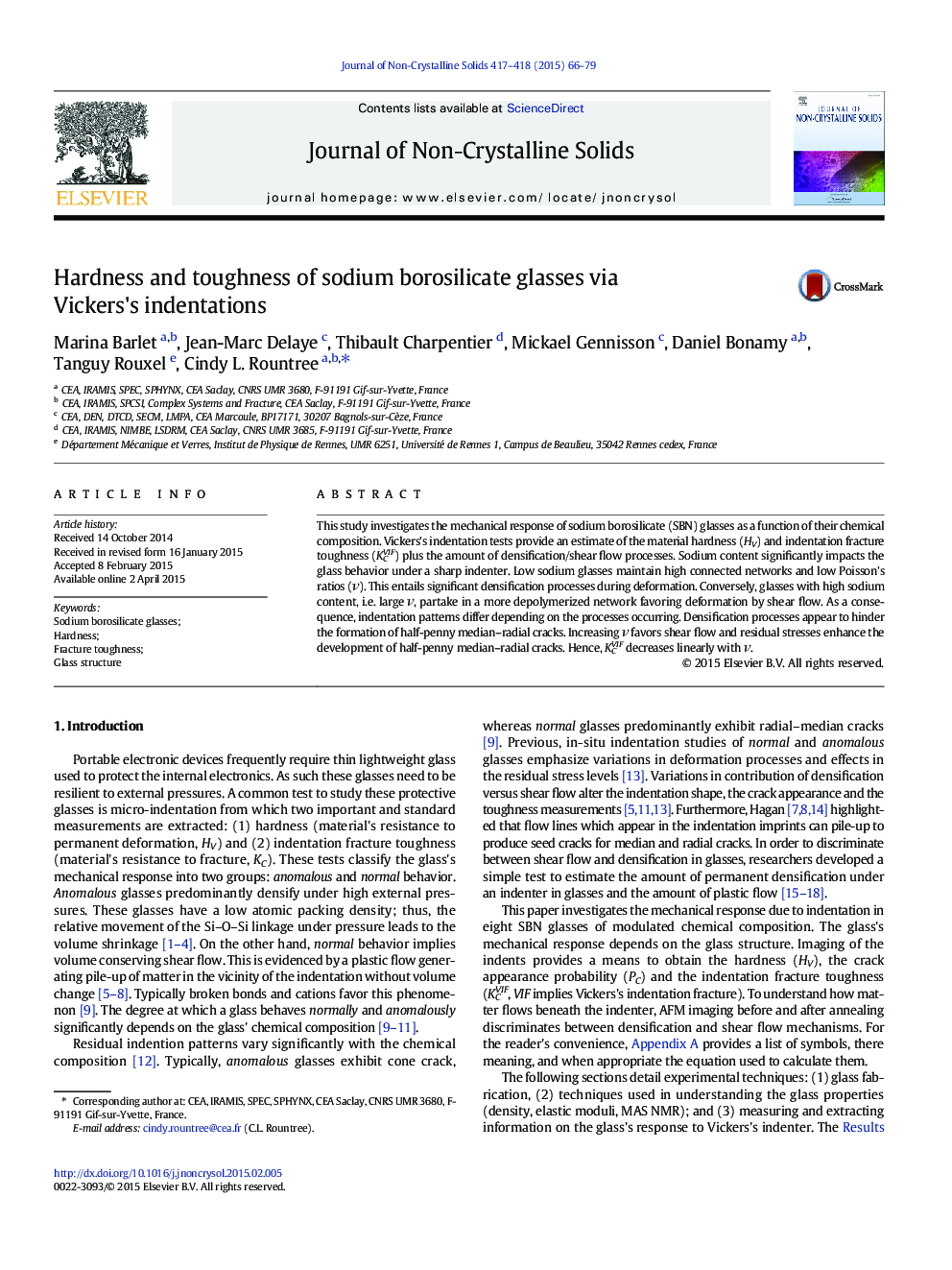| Article ID | Journal | Published Year | Pages | File Type |
|---|---|---|---|---|
| 7901047 | Journal of Non-Crystalline Solids | 2015 | 14 Pages |
Abstract
This study investigates the mechanical response of sodium borosilicate (SBN) glasses as a function of their chemical composition. Vickers's indentation tests provide an estimate of the material hardness (HV) and indentation fracture toughness (KCVIF) plus the amount of densification/shear flow processes. Sodium content significantly impacts the glass behavior under a sharp indenter. Low sodium glasses maintain high connected networks and low Poisson's ratios (ν). This entails significant densification processes during deformation. Conversely, glasses with high sodium content, i.e. large ν, partake in a more depolymerized network favoring deformation by shear flow. As a consequence, indentation patterns differ depending on the processes occurring. Densification processes appear to hinder the formation of half-penny median-radial cracks. Increasing ν favors shear flow and residual stresses enhance the development of half-penny median-radial cracks. Hence, KCVIF decreases linearly with ν.
Related Topics
Physical Sciences and Engineering
Materials Science
Ceramics and Composites
Authors
Marina Barlet, Jean-Marc Delaye, Thibault Charpentier, Mickael Gennisson, Daniel Bonamy, Tanguy Rouxel, Cindy L. Rountree,
